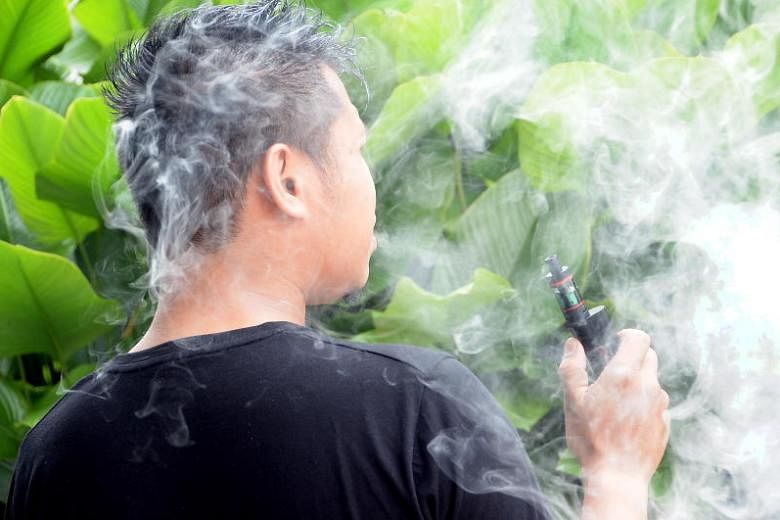SINGAPORE - At what looks like a colourful juice bar a lively presenter blends together a tasty looking fruity milkshake. But then, he adds some car fuel to the mix, and the drink no longer looks enticing.
The stark contrast in the scene is part of the Health Promotion Board's (HPB) newly launched campaign on the harmful effects of e-cigarettes. It attempts to bring across clearly the message of how seemingly appealing and flavourful vaporisers can hide dangerous chemicals.
Benzene, a cancer-causing chemical found in e-cigarettes, can be found in car fuel, exhaust and detergents. Other harmful chemicals in e-cigarettes include nicotine, which is highly addictive and can affect brain development in youths, and formaldehyde, a toxic chemical found in embalming fluid.
The HPB campaign, which aims to educate young people and parents on why e-cigarettes or Electronic Nicotine Delivery Systems (ENDS) are unsafe for use, was launched at a roadshow at shopping mall Bugis + earlier on Saturday (Jan 26).
It will run from this month till March on various platforms including social media, radio station Kiss92, roadshows in central Singapore and at selected institutes of higher learning.
Speaking at the campaign launch, Senior Parliamentary Secretary for Health and Home Affairs Amrin Amin said: "Youths who have used e-cigarettes are more likely to become regular smokers. This is what is known as the 'gateway effect', where e-cigarette users eventually transitioned to smoking cigarettes, or continue to use both."
Mr Amrin debunked the notion that e-cigarettes are a healthier alternative to cigarettes or can help smokers to quit.
"Don't take chances. Be familiar with the facts, don't be seduced by half-truths or lies. It's your health we are talking about. E-cigarettes are not harmless."
He added that there is a worrying global trend on the use of e-cigarettes, especially among young people.
"We have to ensure that our public and young know the facts, and understand the reasons why we have banned ENDS."
The campaign is the latest move by the Government to curb smoking. This is the first time that HPB has launched a campaign focused on e-cigarettes.
In Singapore, the importation and sale of e-vaporisers have been banned since 1993 when all imitation tobacco products were prohibited. E-vaporisers - which include e-cigarettes and e-cigars - are battery-powered devices that heat a liquid (called vape juice) containing nicotine, producing a vapour that is inhaled. In February last year, it became illegal to buy, use or possess harmful or imitation tobacco products like e-vaporisers with offenders facing fines of up to $2,000.
A report by The Straits Times earlier this month said that 67 people were caught using electronic vaporisers (e-vaporisers) in the 10 months since they were outlawed.
The Health Sciences Authority (HSA) said another 245 had been caught for selling the devices in the last five years.
This month, shopping stretch Orchard Road became a smoke-free zone as a precinct-wide smoking ban kicked in on Jan 1, prohibiting smokers from lighting up except within designated smoking areas (DSAs).
There are about 40 DSAs within the Orchard Road no-smoking zone.
During the first three months of the ban, those caught smoking outside of designated smoking areas will receive a verbal warning.
However, repeat offenders and those caught doing so from April 1 may face fines of up to $1,000.
Passers-by at the roadshow said it was disconcerting to find out about the chemicals in e-cigarettes.
Temasek Polytechnic student Sharifah Ahmed, 18, said: "Smoking is so widespread and it's such a big problem to tackle. I guess e-cigarettes seem lighter in comparison and I didn't know they also had such bad chemicals in them."


